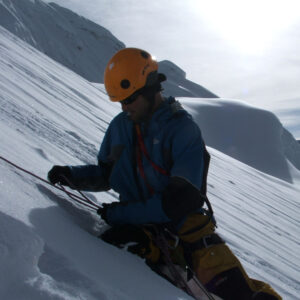The towering peaks of the Himalayas have long been a magnet for mountaineers seeking to challenge their limits and immerse themselves in breathtaking landscapes. Among the many enchanting options, Lobuche East Peak and Island Peak stand out as two thrilling destinations for climbers of all levels. In this blog, we’ll delve into the unique characteristics of each peak, comparing their heights, difficulty, fitness requirements, views, necessary experience, risks, and safety.
1. Height:
Lobuche East Peak: With an impressive elevation of 6,119 meters (20,075 feet), Lobuche East boasts a commanding presence in the Everest region.
Island Peak: Also known as Imja Tse, Island Peak reaches an impressive height of 6,189 meters (20,305 feet) above sea level.
2. Difficulty:
Lobuche East Peak: Considered a challenging climb, Lobuche East requires basic mountaineering skills and some technical expertise, including ice climbing and using crampons.
Island Peak: Island Peak is regarded as a less technically demanding climb compared to Lobuche East. However, climbers must still possess basic mountaineering skills and be familiar with using ropes and crampons.
3. Who Can Climb? Fitness Level:
Lobuche East Peak: This peak is better suited for experienced climbers with prior high-altitude trekking and some mountaineering experience. A good level of physical fitness and endurance is essential due to the demanding terrain.
Island Peak: Island Peak is more accessible to novice climbers with limited mountaineering experience. However, participants should still possess a reasonable level of physical fitness and mental determination to succeed.
4. Views:
Lobuche East Peak: The summit offers awe-inspiring panoramic views of the surrounding Everest massif, including Lhotse, Nuptse, Makalu, Ama Dablam, Pumori, Khumbu Glacier and, of course, Mount Everest itself.
Island Peak: Although slightly lower, Island Peak rewards climbers with breathtaking views of Ama Dablam, Lhotse, Makalu, Baruntse, Amphu Lapcha pass Imja lake and the stunning Imja Valley.
5. Previous Experience:
Lobuche East Peak: While not mandatory, having prior experience in high-altitude trekking and some technical climbing skills is highly recommended to increase the chances of a successful ascent.
Island Peak: While experience is beneficial, Island Peak is often chosen as 
6. Risk Level and Percentage of Death:
Both Lobuche East and Island Peak carry inherent risks associated with high-altitude mountaineering. The primary concerns include altitude sickness, avalanches, and extreme weather conditions. The risk level can vary depending on the season and the climber’s preparedness.
While precise data on the percentage of death for these specific peaks is not readily available, it’s important to note that climbing any high-altitude peak carries inherent risks. Hiring experienced guides and being part of well-organized expeditions significantly reduce the likelihood of accidents.
In conclusion, whether you’re a seasoned mountaineer or a novice adventurer, both Lobuche East Peak and Island Peak offer unforgettable experiences and the opportunity to conquer the Himalayan giants. With proper preparation, guidance, and a passion for exploration, these peaks can become stepping stones in a lifelong journey of mountaineering and self-discovery. Always prioritize safety, choose reputable expedition companies, and respect the natural environment to ensure a successful and rewarding climb. Happy climbing!
©2009-2024 Mountain Hawk Trek Pvt. Ltd. All Rights Reserved.